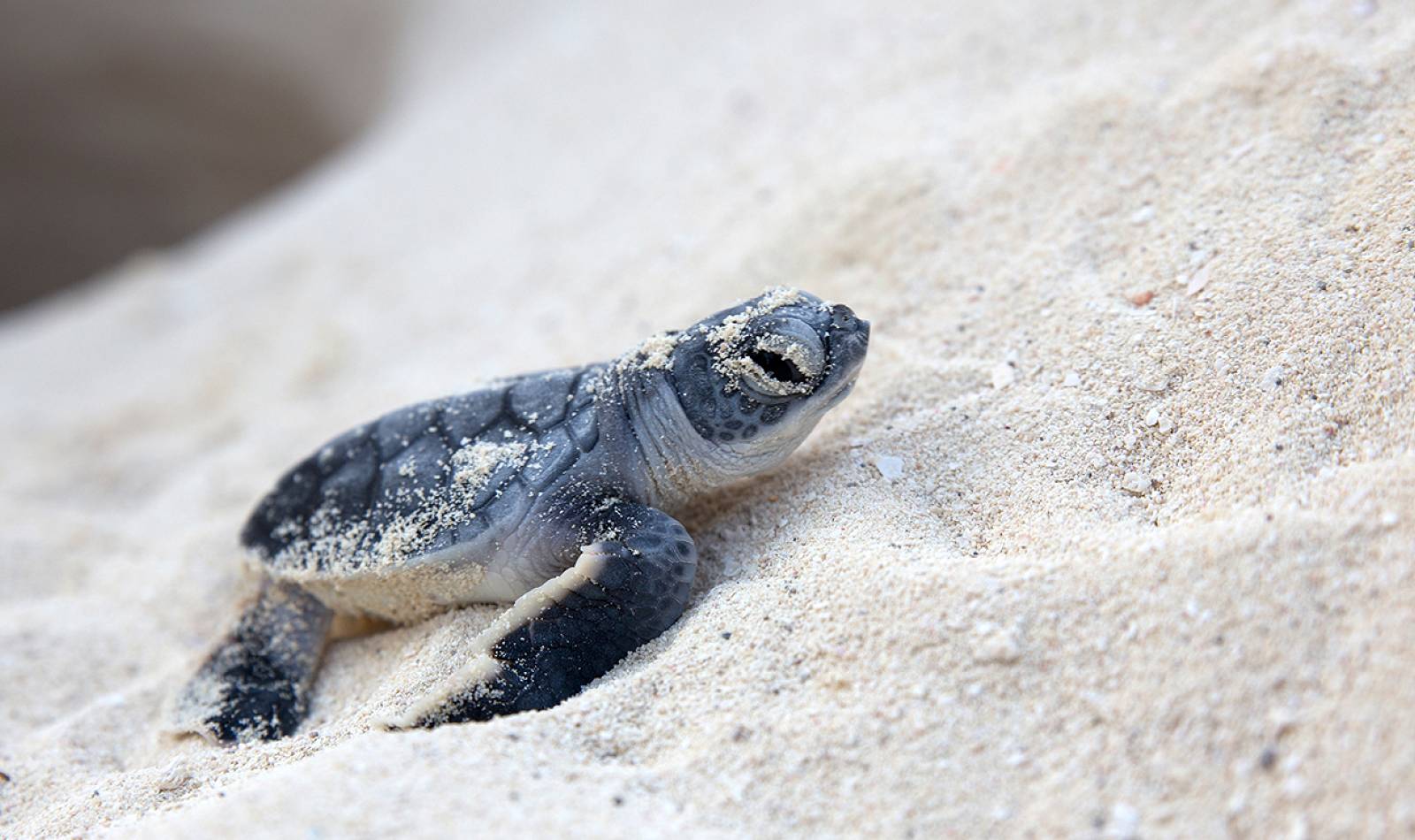
The summer months between July and September are sea turtle nesting here at Atlantis Paradise Island, and we want our guests to join in on the fun. Each year we hand release hundreds of endangered baby sea turtles into the ocean, helping them get started on their long journey to the feeding grounds. Guests of Atlantis can participate in this rewarding experience with the help of our marine team, through our Baby Sea Turtle Release program.
Like many islands in the Caribbean, the beaches of the Bahamas have always been suitable nesting grounds for sea turtles. Each year the turtles remarkably return to the same nesting beach to breed, build nests, and lay eggs. Once the female sea turtle lays her eggs and buries them in the sand to protect against predators, she crawls back into the ocean. Over the next 60 days the eggs go through an incubation period and then once mature enough, the hatchlings break through their shell and dig out of the sand. These baby turtles then make their way down the beach and into the ocean.
The marine team at Atlantis closely monitors the beaches and our lagoons this time of year for nests. Once a nest is found, the eggs are carefully moved to a protected beach for their safety. Following the 60-day incubation period the team gathers the hatchlings. And that’s where you come in! Guests can help our team members bring the baby green sea turtles to the water and let them swim away. This helps reduce the risk of being on the sand too long and dehydrating, while also keeping the newborn sea turtles safe from birds, crabs, and other predators.
It’s a long journey to the feeding grounds, and the risks are great, but with your help these bay sea turtles have a better chance at survival.
Fun Facts
Atlantis has bred, rescued, and released more than 7,500 endangered sea turtles to help increase wild population numbers since 2006.
When the eggs hatch, we release some of the babies right away. We raise some of them for longer, between 2-3 years, to allow them to grow larger so they have a better chance of survival in the wild.
You can spot two different species of sea turtles when you visit Atlantis:
Green sea turtle (Chelonia mydas): endangered
Hawksbill turtle (Eretmochelys imbricata): critically endangered
Graceful and resilient, the green sea turtle is one of the most iconic marine creatures found in the turquoise waters of The Bahamas.
This species can grow up to four feet long and weigh more than 400 pounds.
Like other reptile species, sea turtles lay eggs. Every two to three years, females climb onto the beach a few weeks after mating, use their front flippers to dig a body pit, and then use their hind flippers to dig a cavity in which they lay 50-200 soft-shelled eggs. The young usually hatch 45-70 days later.
Green sea turtles are primarily herbivores, grazing on seagrass beds that help keep these vital marine ecosystems healthy and thriving.
Keep our beaches and ocean clean! Sea turtles can become entangled in fishing nets and lines, and they ingest trash— especially plastic bags that look like jellies.
Your dream Bahamas vacation is closer than you think. Book your last-minute getaway, save up to 30% and unwrap paradise this season.
Your dream Bahamas vacation is closer than you think. Book your last-minute getaway, save up to 30% and unwrap paradise this season.
Make 2026 the year you say yes to adventure, relaxation, and to the unforgettable at Atlantis Bahamas. Book today and unlock; up to 35% off, complimentary daily breakfast for two.*
Make 2026 the year you say yes to adventure, relaxation, and to the unforgettable at Atlantis Bahamas. Book today and unlock; up to 35% off, complimentary daily breakfast for two.*


